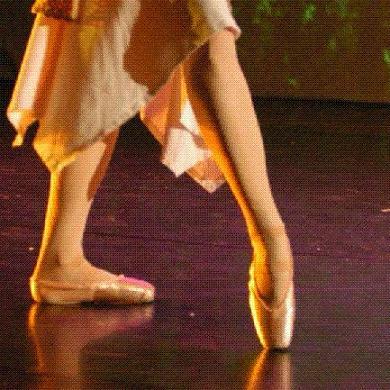The Illumination Project, December 1, 2005, Hobby Center's Zilkha Hall
The dance community has been particularly hard-hit by AIDS. Several dancers whom I've known personally are either fighting the disease or have died from it, including one of Mr. Silvershoes's cousins. A few years ago I met a man who danced with Houston Ballet when the disease was first emerging. He said that seeing so many of his colleagues suffering and dying from AIDS played a large part in his decision to find another career. It's a shame then that more of the Houston dance community, by which I mean both dancers and audience members, doesn't come out to this annual performance to raise awareness about World AIDS Day and the ongoing fight against this disease. First, because it's an important cause, and second, because they're missing some wonderful performances.
This project is co-produced by Dominic Walsh Dance Theater and Hope Stone Dance. The theater space was donated by the Hobby Center, and the stage crew and some (probably all) of the performers volunteered their services. This year marked the fourth year for the project, with this year's proceeds going to the Baylor International Pediatric AIDS Initiative and Bering Omega Community Services.
The program was an eclectic mix of live dance, dance made for video, and theater arts. I saw the first piece on the program, Duo, back in May, but performed by two women, both on pointe. (I didn't write about it in my post, but here's a link anyway.) On Thursday it was performed by Lindsey McGill (in May also, still on pointe) and Dominic Walsh. It may have been because I was a lot closer to the performers this time, but the dynamic between the two dancers seemed different, with more playful back-and-forth. It was also interesting to see the differences in the way the two dancers danced the same movement, particularly with one on pointe and one not.
It's Gonna Rain was a fascinating study in repetition. The music was crafted by Steve Reich from a short sound clip of a southern preacher. We heard the clip in its entirety three times at the beginning of the piece - I (mis?)remember something about Moses and a flood, although Noah and a flood would make more sense. Regardless, the bulk of the music was snippets of the phrase "it's gonna rain," repeated at about 1 Hz and evolving slightly each time. It sounded as though Mr. Reich had kept the duration of the snippet constant but shifted the starting point. The repetition provided a beat of sorts, and the tempo varied occasionally as the snippet was stretched or contracted. The movement, choreographed and performed by David Neumann, paralleled the music, repeating but evolving. Mr. Neumann danced in a bright white special at the front of the stage, with the rest of the stage dark. To my eyes the quick movement against the dark background often appeared as a long-exposure photo, lending additional dimension.
Rounding out the dance pieces were Rosa...48 Hours... by Paoli Georgudis and Glass Half Full by Jane Weiner. In Rosa Ms. Georgudis and Mr. Walsh moved with excrutiating slowness to music provided live by Mercury Baroque. I didn't get it until after the show one of the people I was with suggested that it evoked the feeling of frustration and helplessness experienced by people watching their bodies slowly fail. Duh... wish I'd thought of that. Glass Half Full was an ensemble piece for six dancers and had lovely flow and energy. It made me think that there is too little of this kind of choreography in "contemporary" performances; so much of it is solos and duets.
On the theater side was a monologue from The Laramie Project, a play about how the town of Laramie responded to the murder of Matthew Shepherd. It was movingly performed by Rutherford Cravens, who is, by the way, one of the voices in the video game Axis & Allies. Apprentices from the Theater Under The Stars conservatory sang and signed "Love & Love Alone."
There was one video, a "dance made for video" called Outside In choreographed by Victoria Marks and directed by Margaret Williams. This work was remarkable for many reasons, the foremost being that half of the six dancers had significant physical disabilities. The interaction between the dancers was warm and affectionate and served to humanize people whose disabilities often make us feel uncomfortable. One man, who had no legs whatsoever, was phenomenal. Ms. Marks's choreography demonstrated his broad range of movement; in fact, when he mirrored the movements of a dancer with legs, it became clear that he could do some things that a leggy dancer could not. Several elements reminded me of Reines d'un Jour from the Big Range video night: dancing in a green field, a succession of people passing on a kiss.
Labels: performance review

1 Comments:
thanks for your support of Illumination and Cooking Show.
do you dance at hope center?
merci in a BIG way!!!!
j
Post a Comment
<< Home